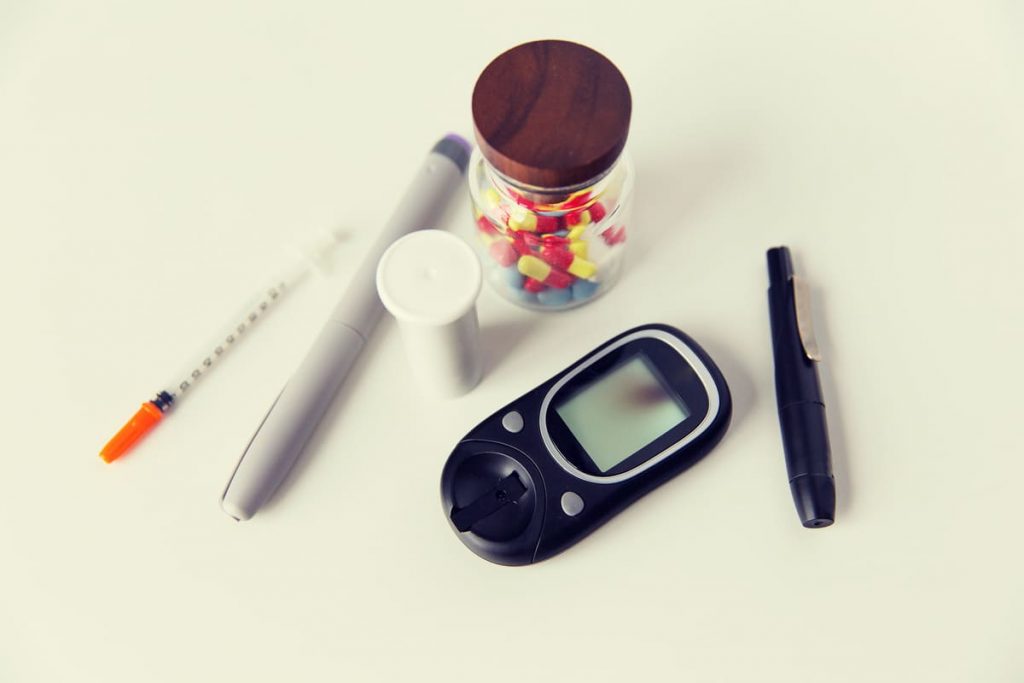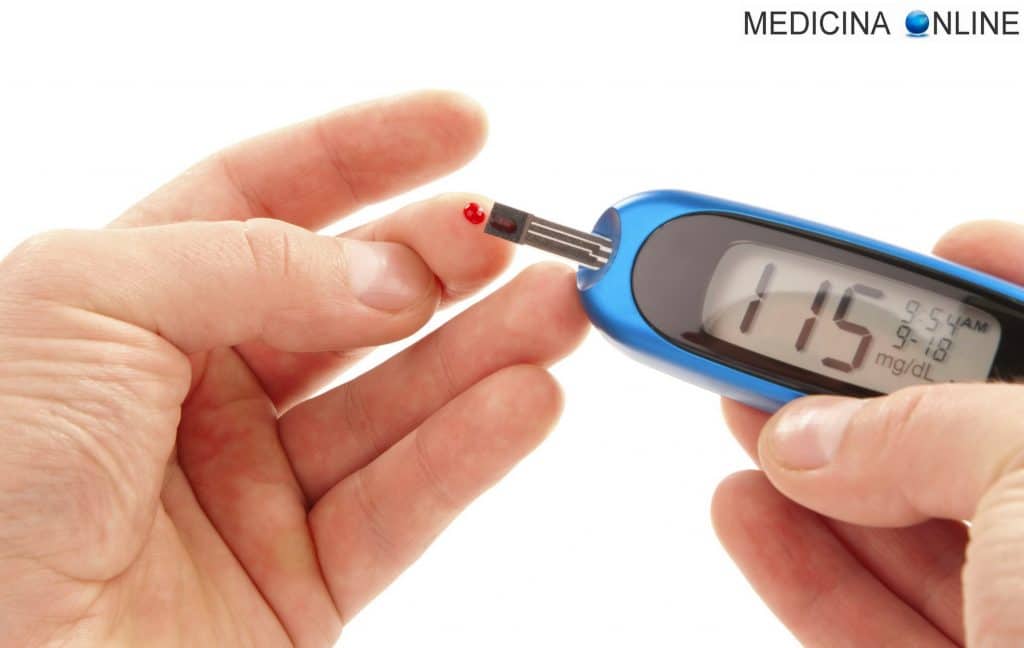In a new study, researchers showed that a drug that inhibits FAK, which has been studied in cancer treatment, converted acinar cells into acinar-derived insulin-producing (ADIP) cells and helped regulate blood glucose. in mice with diabetes and in a single non-human primate individual.
The research was published on Nature Communications.
An anticancer drug to fight diabetes
In 2016, University of Pittsburgh researchers Dr. Farzad Esni, Ph.D., and Jing Hu, Ph.D., conducted an experiment in mice in which they deleted one of two copies of the gene that codes for a enzyme called focal adhesion kinase (FAK). They were interested in the role of FAK in pancreatic cancer, but a surprising discovery took the research in a very different direction.
“The pancreas looked strange, almost like it was trying to regenerate itself after an injury,” said Esni, an associate professor of surgery at Pitt and a member of the UPMC Hillman Cancer Center and the McGowan Institute for Regenerative Medicine.
Even stranger, a group of cells in the pancreas expressed both insulin and amylase. In normal mice and humans, insulin, the hormone that regulates blood sugar, is produced by beta cells, while amylase, a digestive enzyme, is produced by acinar cells. The functions of acinar and beta cells are very distinct, so it didn’t make sense that the cell cluster looked like a combination of the two.
“There were three possible explanations for what we saw in the mutant mice,” Esni said. “It could have simply been an artifact of our experiment, the beta cells could have started producing amylase or the acinar cells could have started producing insulin, which would be the Holy Grail.”
The findings suggest that FAK inhibitors could represent a new avenue to replace insulin therapy in diabetic patients. Without enough insulin, patients with diabetes are at risk for hyperglycemia, or high blood sugar levels, which can damage blood vessels and organs and lead to heart attacks, strokes and other serious complications.

To study the effects of ADIP cells in an animal model of diabetes, researchers partially or completely wiped out the animals’ beta cells with a low or high dose of a compound called streptozotocin, which mimics diabetes. Then they treated the mice with a 3-week course of an oral drug that inhibits FAK called PF562271 or a placebo.
Mice treated with FAK inhibitors regained about 30% of their original beta cell mass, and the treatment partially ameliorated hyperglycemia. These results persisted until the end of the experiment several weeks later, suggesting that a one-time treatment may have long-term benefits for diabetes control.
The team also examined the effects of the FAK inhibitor in a single non-human primate. After receiving diabetes-inducing streptozotocin, four macaques needed 5-20 units of insulin per day to manage their blood sugar. Next, the researchers treated one of these diabetic macaques with a 3-week course of FAK inhibitor.
Six weeks later, the animal’s insulin requirements decreased by 60%, a stable improvement that continued without further treatment until the end of the experiment four months later.

The idea of prompting acinar cells to produce insulin is not new, but FAK inhibitors may have a smoother translational path than genetic approaches because the drug has already been tested in phase 1 cancer trials. It is also administered orally, which is simpler than complicated genetic tools that involve viral delivery of foreign genes or genetic factors that activate genes.
“Functional, ADIP cells should be similar to acinar cell-derived insulin-producing cells in other studies, but an important distinction is that our cells actually infiltrated pre-existing pancreatic islets, where beta cells normally reside,” Esni said.
“Our cells can take advantage of the islet environment, where they have access to blood vessels for glucose monitoring, which makes them much more powerful.”
With hopes of launching a clinical trial to test the FAK inhibitor in diabetes patients, Esni and his team are now planning long-term experiments in mice to examine the duration of hyperglycemia control after a single course of the drug in models mice for type 1 or type 2 diabetes. They are also studying the effects of FAK inhibition in pancreatic tissues from human donors.
Regenerate insulin in pancreatic stem cells
Researchers are focusing on the ultimate quest to regenerate insulin in pancreatic stem cells and replace the need for regular insulin injections.
Researchers at the Baker Heart and Diabetes Institute demonstrated in a paper published in Signal Transduction and Targeted Therapy that newly produced insulin cells can respond to glucose and produce insulin after stimulation with two U.S. Food and Drug Administration-approved drugs in as little as 48 months. hours.
Furthermore, they confirmed that this pathway of awakening insulin-producing cells is viable in age groups between 7 and 61 years, providing much-needed insight into the mechanisms underlying beta cell regeneration.
Using pancreatic cells derived from donors of type 1 diabetic children and adults and from a non-diabetic person, a team led by Professor Sam El-Osta has shown how the insulin-producing cells that are destroyed in people with type 1 diabetes can be regenerated into cells that sense glucose and functionally secrete insulin.

In this latest study from the Human Epigenetics team, researchers show that small inhibitory molecules currently used for rare cancers and approved by the US FDA can rapidly restore insulin production in pancreatic cells destroyed by diabetes.
Although current pharmaceutical options for treating diabetes help control blood glucose levels, they do not prevent, stop, or reverse the destruction of insulin-secreting cells.
The new therapeutic approach has the potential to become the first disease-modifying treatment for type 1 diabetes by facilitating the production of glucose-responsive insulin by harnessing the patient’s remaining pancreatic cells, thus allowing people living with diabetes to potentially achieve independence from insulin injections 24 hours a day.
This disease-modifying treatment also represents a promising solution for the significant number of Australians living with insulin-dependent diabetes, who represent 30% of those with type 2 diabetes.
The development of new drug therapies aimed at restoring pancreatic function addresses the harsh reality of donor organ shortages.
“We see this regenerative approach as an important step forward towards clinical development,” said Professor El-Osta. “Until now, the regenerative process has been incidental and, in the absence of confirmation, especially the epigenetic mechanisms governing such regeneration in humans remain poorly understood,” he said.

This research demonstrates that 48 hours of stimulation with small molecule inhibitors is sufficient to restore insulin production by damaged pancreatic cells.
JDRF senior researcher Dr Keith Al-Hasani said the next step will be to study the new regenerative approach in a preclinical model. The goal is to develop these inhibitors as drugs to restore insulin production in people living with diabetes.
As work progresses, so does the need to translate quickly. Over 530 million adults live with diabetes and that number is expected to rise to 643 million by 2030.
New molecular mechanisms in the early development of diabetes mellitus
Researchers led by the University of Tsukuba conducted a gene expression analysis at the single-cell level on the pancreatic islets of prediabetic and diabetic mouse models. Their findings are published in the journal Diabetes.
The analysis results revealed an upregulation of Anxa10 expression in pancreatic beta cells during the early stages of diabetes, attributed to high blood glucose levels. This high expression of Anxa10 was found to influence intracellular calcium homeostasis, leading to a reduction in insulin secretory capacity.
Type 2 diabetes, a major form of diabetes, is widely recognized for its association with insulin resistance, a condition in which insulin becomes ineffective. This ineffectiveness results from factors such as obesity, disruption of compensatory insulin secretion by pancreatic beta cells (pancreatic beta cell dysfunction), and a decrease in pancreatic beta cell volume. Despite this understanding, the pathogenesis and underlying mechanisms of the disease remain unidentified.
To fill the knowledge gap, researchers at the University of Tsukuba performed single-cell gene expression analyzes on islets from db/db mice, a model of diabetes. Their goal was to elucidate changes in the constituent cells of the islets – the insulin-producing tissues in the pancreas – during the progression of type 2 diabetes from a healthy state to a pre-diabetic state and finally to a diabetic state.

The analysis identified 20 cell clusters, including β cells, α cells, δ cells, PP cells, macrophages, endothelial cells, stellate cells, ductal cells, and acinar cells. Furthermore, pancreatic β cells in diabetic model mice were classified into six groups as the disease progressed.
Pseudotemporal analysis revealed a novel pathway in which pancreatic β cells undergo dedifferentiation and subsequently differentiate into acinar cells. Furthermore, the researchers identified Anxa10 as a gene specifically upregulated in pancreatic β-cells during the early stages of diabetes.
They further revealed that Anxa10 expression is triggered by high calcium levels in pancreatic β-cells, contributing to a reduction in insulin secretory capacity. These findings are expected to clarify the molecular mechanisms underlying type 2 diabetes, particularly in its early stages, and pave the way for the development of new preventive, diagnostic and therapeutic strategies.
#Diabetes #cured #anticancer #drug
